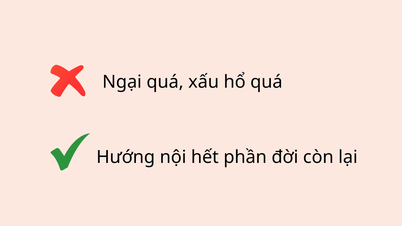Regardless of one source of income, many Americans are selling services, products, and advice on social media platforms.
Natalie Fischer, 25, from Seattle, Washington, USA, is obsessed with making money online. Despite having a master's degree and working as a data analyst with an income of hundreds of thousands of dollars a year, she is always busy with her side job. At times, Natalie works up to 30 hours a week, mainly selling personal financial advice, promoting products and brands on social networks.
Last July, she quit her job to pursue a full-time side hustle. She started earning more than she was earning at her previous company and expects that number to grow exponentially in the coming years.
“The days of relying on just one source of income are over,” says Natalie.
More and more young workers are taking on multiple jobs to supplement their income, develop skills, build relationships and unleash their creative energies by selling online courses, products, services or gaining influence on social media.
Compared to previous generations, young people are taking advantage of access to digital devices and the Internet to earn money. They grew up during the 2008 financial crisis, went through school during the Covid-19 outbreak and witnessed a wave of mass layoffs. All of these are driving forces for this generation to increase their income, ensuring a more fulfilling and happier life.

Young Americans are trying to do many things to improve their income, gain skills and become their own boss. Illustration: BBC
Professor Aaron McDaniel, in charge of entrepreneurship and innovation at the University of California, USA, said: "You can easily create anything on the Internet. Social platforms promote creativity and help people make money."
Natalie, for example, likes to post about finance, which started out as a personal hobby. Now, the 25-year-old is pursuing her dream of being her own boss. She is currently taking online courses on entrepreneurship and social media marketing.
Fischer gained traction by sharing articles about her journey to learn about the stock market. People's questions were turned into video topics on TikTok and she had 56,000 followers. Over time, she received sponsorships and created content for brands.
“People loved the content, but there were mixed opinions. One of the reasons was that I was Asian, young, and made them skeptical about my abilities,” she recalls of her first videos.
However, age does not stop Gen Z from taking advantage of every opportunity.
Colin Stroud, 24, of Columbia, Ohio, found a side hustle after sharing his tips for traveling to Hawaii with credit card rewards points on LinkedIn. After becoming unemployed, Stroud began sharing related articles from his own experiences.
Now, the 24-year-old charges $150 for a 75-minute consultation and $175 for travel planning. That gives Stroud and his wife a monthly income of $3,000 from their side hustle, more than they earned when they were working.
“Things have changed so that we can afford middle-class things, which I had to work really hard to achieve,” Stroud said.

Colin Stroud's post sharing his free travel experience on social media received attention. Photo: WP
Many young people share that taking on a digital side job alongside their main job helps reduce financial burden, build skills and enhance their profile.
Mariz Isabella Ash, 22, of Huntington Beach, California, USA, said that most of her time as a student is spent online, leaving her no time to build relationships at school. Not to mention, many jobs require experience, leaving graduates with few opportunities.
The 22-year-old, who will graduate from California State University, Long Beach, in the spring of 2025, works full-time in sales at a drug and medical device manufacturer. She also gets paid to help companies, organizations, and individuals use social media. She occasionally babysits through the Bambino Sitters app.
Ash sees her side hustle as a necessary part-time job in an increasingly difficult economy. Despite working 60 hours or more a week, she hopes to find a side gig once she’s financially stable.
While the older generation is judging Gen Z as lazy and idealizing social media fame, the reality is completely opposite. Young people today understand more about how to make money on social media, are willing to work extra, find ways to adapt to difficult economic conditions and are not afraid to show their personality at work.
Ang Richare, 24, of Boston, Massachusetts, has earned an extra few hundred to several thousand dollars a month through advertising, selling personal career consulting services on LinkedIn, speaking and facilitating courses.
Most of Ang's side hustles stem from positioning herself as a representative for Gen Z as an assistant director at Boston University's Career Development Center, where she works.
“I wanted to show my family and others that there are many paths to success, to express yourself and to break free from the outdated mindset about money,” Richard said.
Besides, some experts warn young people to be careful with their side jobs.
Lindsey Cameron, assistant professor at the Wharton School of the University of Pennsylvania, said that to succeed in a side job requires a lot of time and effort, and requires young people to be interested in and knowledgeable in certain fields.
“You can live up to your idealized version of yourself, but there is a limit to how much advertising money brands can spend. After all, not everyone is successful,” Cameron said.
As for Fischer and many other young workers, they still expect side jobs to continue to grow as many businesses cut costs and benefits.
“There is a lot of distrust with companies. Our loyalty is dead now,” Fischer said.
Minh Phuong (According to Washington Post )
Source







![[Photo] Opening of the 13th Conference of the 13th Party Central Committee](https://vphoto.vietnam.vn/thumb/1200x675/vietnam/resource/IMAGE/2025/10/6/d4b269e6c4b64696af775925cb608560)
































































































Comment (0)